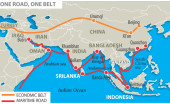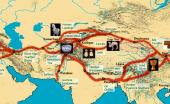Molly Minturn - My family is heartbroken to share that my father died in surgery on Monday, Feb. 10. It…
Airborne cars
Written by Diana Thebaud Nicholson // April 22, 2010 // Transportation // 1 Comment
Flying car? Dept of Defense OKs new Jetsons-like vehicle
The US Dept of Defense has budgeted $54 million so far to develop the flying car and believes it will take four years to develop a prototype.

Why airborne automobiles will never take off
(The Economist) WHAT is it about “flying cars” that makes otherwise sensible engineers lose touch with reality? Ever since Glenn Curtiss, a seaplane pioneer, racing legend and the Wright brothers’ rival, tried to make a flying car early in the last century, tinkerers have dreamed of having an automobile sprout wings, soar above the traffic, then land and tuck its wings away ready for a short trip into town. Flying cars of one sort or another have dominated the pages of schoolboy comics ever since.
Enthusiasm for flying cars reached a peak in the 1950s when the Ford Motor Company almost started mass-producing one. Studies done at the time showed such a vehicle was technically feasible, was fairly easy to manufacture and had commercial appeal. The markets identified for it included the police, ambulance and other emergency services plus the armed forces and wealthy individuals.
The problems then, as now, were more regulatory than technical or economic. The Federal Aviation Administration (FAA) was aghast at the volume of additional air traffic Ford had in mind. The air-traffic control systems of the day would have been overwhelmed. Ford promptly abandoned the idea, even though its flying car would have been cheaper to build and operate than the helicopters that subsequently took over most of their intended roles.
Since then, a number of diehards and dreamers have laboured on. Some have hitched small cars to paragliders or gyrocopters. Others have attached wings and control surfaces to motorbikes and tricycles. More recently, the trend has been towards designing vehicles that are more like “roadable planes” than “flyable cars”—with wings that fold back or are detached and left at the landing strip for short trips into town.
Then there are those who believe the best—though, technically, the most challenging—way to build a flying car is to adopt a vertical take-off and landing approach. One enthusiast, Canadian-born Paul Moller of Davis, California, has spent an estimated $250m of his own and other people’s money over the past 45 years trying get his fan-powered Skycar off the ground. So far, none of his vertical take-off and landing prototypes has risen much more than a few feet.
Despite the many failures, two recent developments have raised hopes of flying-car buffs everywhere. One was the new category of recreational aircraft the FAA sanctioned in 2004. Weighing no more than 1,320lb (600kg) and limited to just two seats and a top speed of 120 knots (220kph), these so-called “light sport aircraft” fill a gap in price and performance between ultra-lights at the low end and general aviation at the more sophisticated end of the private-aircraft spectrum.
The other development that helped revive interest in flying cars was the competition that the American space agency, NASA, launched in 2005 for a personal air vehicle that would be quiet, fast and affordable, and need less than 330 feet (100 metres) of runway to take off. More to the point, these vehicles were to have folding wings and be legal on the road.
One of the first to take advantage of these new developments was a start-up called Terrafugia founded in 2006 by engineers from the Massachusetts Institute of Technology. A prototype of the company’s Transition—a two-seater with wings that can be folded at the touch of a button and four wheels for use on the road, and fuelled by regular petrol bought from a filling station—made its maiden flight earlier this year.
Though not the first such roadable plane with folding wings, Terrafugia claims its Transition is the only one capable of a seamless transition from road to air and back again. The company hopes to start selling the $194,000 aircraft in 2011.
Before that, the Transition will need to be certified by the FAA as airworthy. That should not present much of a difficulty, given that the Transition has been designed as an aircraft from the start—instead of merely having wings attached to a car body.
The greater difficulty will be getting the Transition certified for use on public roads. The amount of safety testing for both the occupants and other road users is formidable.
In America, road vehicles that are to be produced in even modest numbers invariably need to incorporate a host of additional safety and environmental features before they pass muster with the National Highway and Traffic Safety Administration, the Department of Transportation, the Environment Protection Agency and particularly the trendsetting California Air Resources Board. Getting an airworthiness certificate from the FAA is a piece of cake by comparison.
Meeting crash requirements invariably adds weight. As it is, the Transition can carry only 430lbs of passengers and luggage with a full tank of fuel. (The average weight of an American man is 185lbs.) If the structure has to be beefed up to meet crash requirements, the vehicle’s range will have to be slashed—or a passenger left behind.
In the meantime, a little more than a year after having started it, NASA quietly dropped its personal air vehicle programme. The whole idea was deemed too far-fetched. The dream lives on only in the minds of enthusiasts as something that one day might become a reality.
Your correspondent is not so sure. He recalls, for instance, the way Pan-Am, once America’s dominant airline, was taking deposits in the 1960s for trips to the moon. Half a century on, he is still waiting for his lunar excursion.
There are at least four reasons why motorists are unlikely ever to take to the skies. Planes like the Transition are not glorified cars; they are aircraft strictly for licensed pilots. Admittedly, a sport pilot licence will get an owner airborne. But without a proper instrument rating, owners will be restricted to daytime flying, in good weather and in uncongested airspace below 10,000 feet. The Transition and its ilk are niche products, alongside other light sport aircraft, for people willing to spend time and money getting a pilot’s licence.
And forget about taking off or landing on public roads. The only place in America where that is legal is Alaska—a place notorious for its air crashes. Most other countries have similarly strict rules about operating aircraft on public roads.
Then there is the air-traffic control problem. Things may have come a long way since Ford abandoned its plans for selling flying cars to the motoring public, but today’s network of ground-based radars is already buckling under the weight of existing air traffic. It is even less capable of handling lots of half-trained flyers dodging around the air-lanes than its predecessor was in the 1950s.
What about the next generation of air-traffic control systems that promise to use GPS satellites and radio transponders to warn all aircraft in a given area about the presence of others? Even that is expected to be as overloaded as the present one when fully implemented in 2020.
Finally, because a flying car is a compromise between an aeroplane and an automobile, it can never be as competent as either when doing the job of one or the other. When the weather gets rough, that can cause problems—on the ground as well as in the air.
Manufacturers of private planes in America were given an exemption from product-liability laws in 1994. But that was primarily to protect suppliers and jump-start a dying industry. Contrary to popular opinion, the act does not prevent individuals from suing the provider of a defective aircraft. Imagine the lawsuits that would result the moment flying cars started falling from the sky.
To all those drivers who still dream of being able to soar above the traffic: get a pilot’s licence. Better still, learn to fly a helicopter. Otherwise, dream on…




One Comment on "Airborne cars"
You are cordially invited to see my flying car project at http://www.strongware.com/dragon.
You could view the 2-minute video of my full-size mockup model.